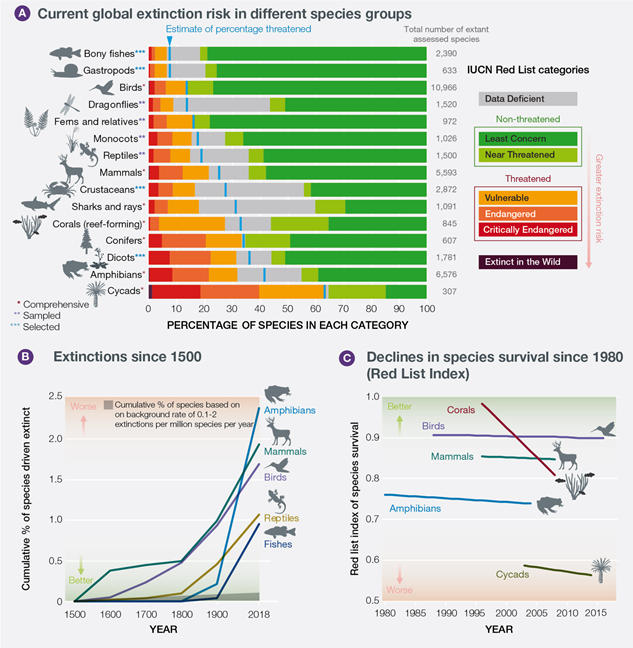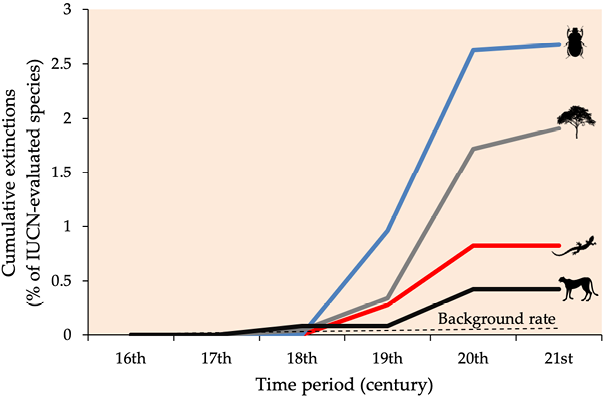12.3: Rates of Extinction
- Page ID
- 71500
If extinction and speciation are natural processes, an obvious question follows: “Why should we care about the loss of biodiversity?” The answer concerns not individual species extinctions as much as the increasing rate of these extinctions (Figure 12.3.1 and 12.3.2). While a species can be wiped off Earth over a relatively short period of time, speciation typically occurs slowly as the genetic makeup of a population shifts over thousands of years. Unfortunately, we are currently losing species 1,000 times faster than natural background extinction rates (for mammals estimated to be 1.8 extinctions per 10,000 species per 100 years, Barnosky et al., 2011), and future rates may be 10,000 times higher that background rates (de Vos et al., 2015). Because over 99% of current species extinctions have been linked to human activity rather than natural processes (Pimm et al., 2014), observations on past extinctions and subsequent speciation may not apply to the present. Moreover, unlike before, humans now share the planet with the species we are wiping out. These losses mean that we are also losing the benefits we gain from nature at unprecedented rates.




